Hey there! As we dive into another exciting season at our workplace, it's the perfect time to revisit our dress code policy to ensure everyone feels comfortable and confident while representing our team. A well-thought-out dress code helps to cultivate a professional environment, while still allowing for personal expression. We all play a part in upholding this standard, and a quick reminder can help us stay aligned. So, let's take a moment to explore the key elements of our dress code policyâread on for more details!
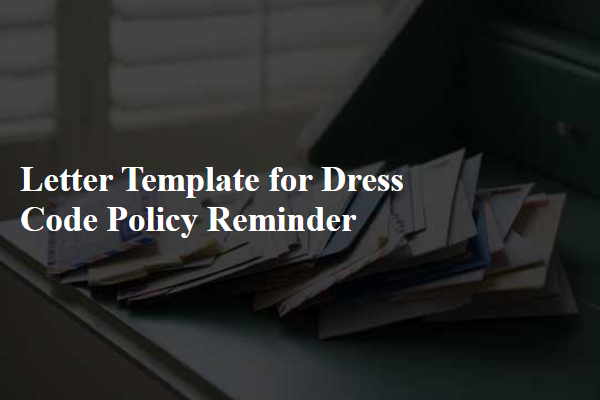
Clarity and Precision
Company dress code policies establish professional standards that enhance the workplace environment, particularly in corporate offices. Business professional attire typically includes tailored suits for men, defined as a jacket and trousers, paired with formal shoes, while women may wear business suits or conservative dresses, complemented by closed-toe shoes. Casual Fridays allow for a relaxed dress code, permitting chinos or smart jeans, provided they remain free of tears or excessive wear. Specific industries, like tech or creative fields, might endorse a more relaxed dress code, yet professionalism should always remain a priority. Compliance with the dress code is essential for maintaining a cohesive and respectable company image, particularly during client meetings or formal presentations, where first impressions hold significant weight.
Tone and Professionalism
The dress code policy at our company is designed to maintain a professional and respectful work environment. All employees are expected to adhere to the established guidelines, ensuring attire is appropriate for the workplace. For instance, business casual attire typically includes slacks, collared shirts, and closed-toe shoes, while excessively casual clothing such as flip-flops, ripped jeans, or sleeveless tops should be avoided. Departments, such as client-facing teams or those involved in events, may have additional requirements to reflect a professional image. Regular adherence to the dress code not only fosters a cohesive atmosphere but also supports the company's branding and values. Thank you for your continued commitment to upholding our standards.
Dress Code Guidelines
A dress code policy sets the standard for professional appearance in the workplace, promoting a cohesive environment that reflects organizational values. Guidelines typically specify acceptable attire, which may include business formal, business casual, or company-specific uniforms, depending on the industry standard. For example, financial institutions like Goldman Sachs enforce business formal attire, requiring tailored suits and conservative colors. In contrast, tech companies such as Google may embrace a business casual approach, allowing polo shirts and khakis. Clear communication of these guidelines helps employees understand expectations and contributes to a professional atmosphere that can enhance productivity and employee morale. Regular reminders about these standards reinforce the importance of adhering to the dress code to maintain professionalism.
Consequences for Non-Compliance
Non-compliance with the established dress code policy can lead to significant repercussions within a workplace environment. Employees may face verbal or written warnings for initial infractions, articulated clearly in the employee handbook. Continued disregard of the dress code can result in more severe consequences, including suspension without pay, up to three days, depending on the severity of the breach. The policy aims to promote a professional atmosphere while reflecting the company's values and standards set forth in the corporate governance guidelines. Compliance will be monitored regularly through visual inspections by management during scheduled meetings and events, such as weekly team huddles or quarterly reviews, ensuring that all team members adhere to these expectations.
Contact for Queries
In professional settings, adherence to established dress code policies plays a crucial role in maintaining a positive organizational image. Organizations, such as corporate offices or educational institutions, often specify dress codes, detailing acceptable attire categories, including business casual, formal, or casual wear. Specific guidelines may highlight suitable fabrics, colors, and styles that align with the company's values and culture, ensuring employees present themselves appropriately during hours of operation. Dress code violations can lead to negative perceptions of professionalism, impacting client interactions and team dynamics. Employees requiring clarification about the dress code should contact their HR department or direct supervisor, ensuring they navigate expectations effectively and uphold the company's standards.

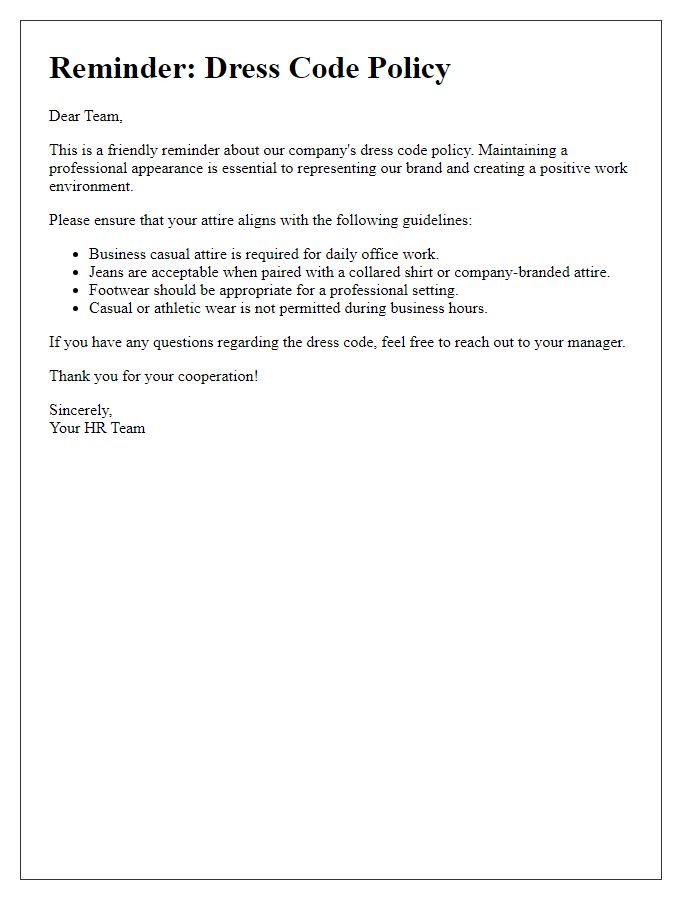
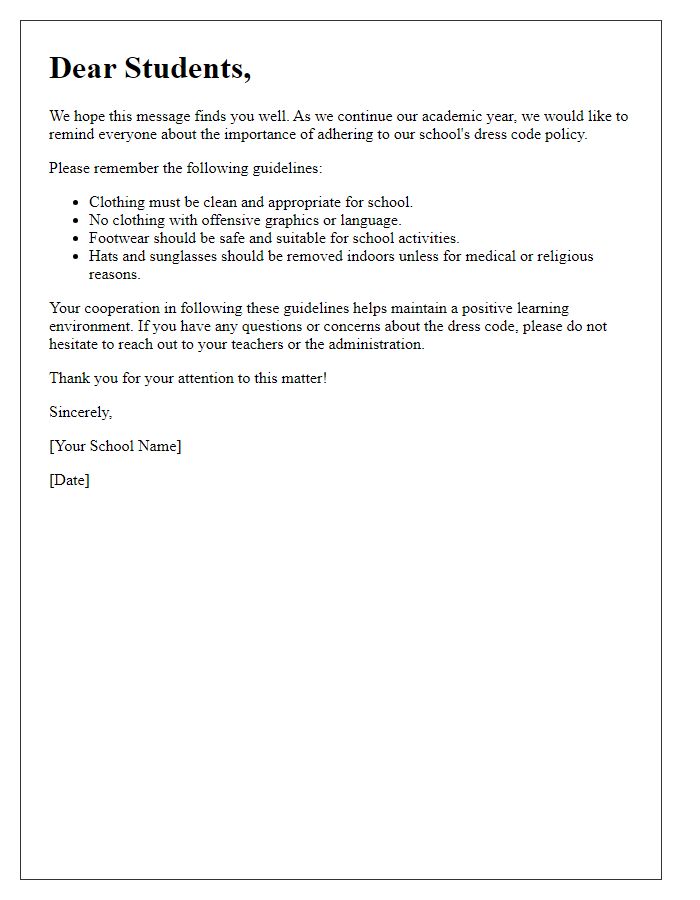
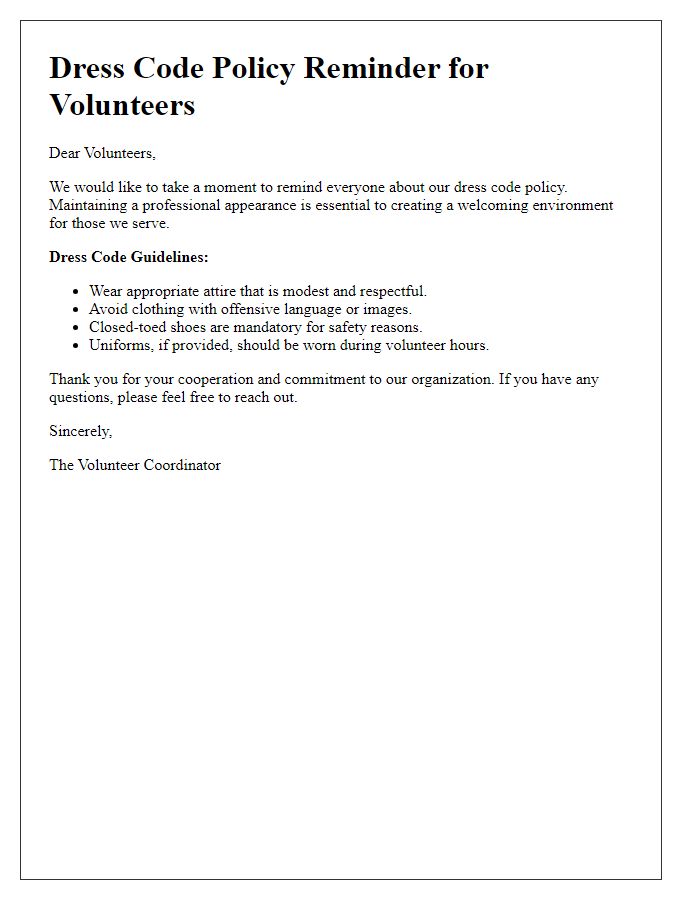
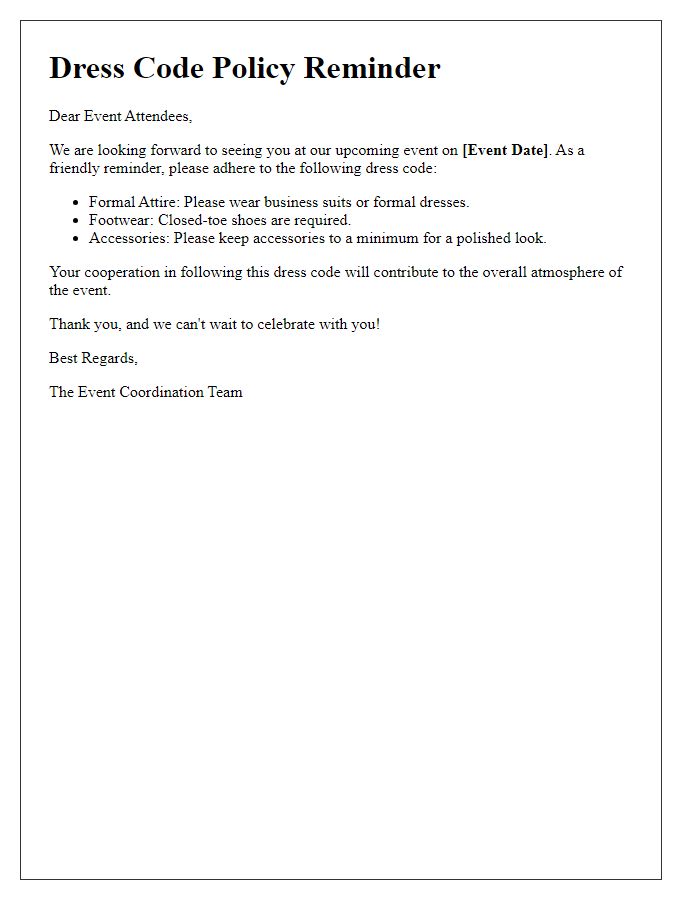
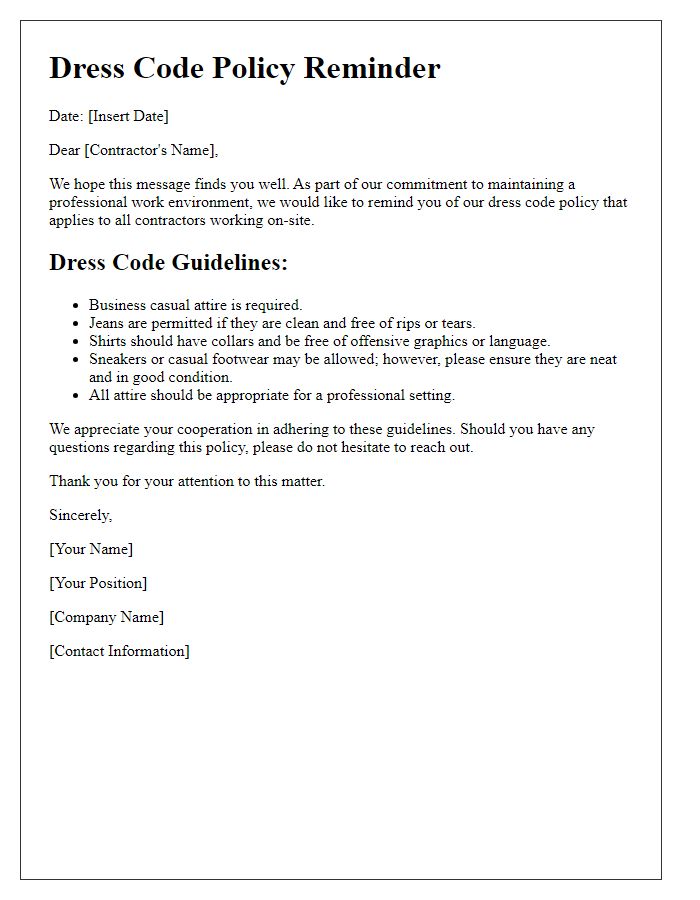
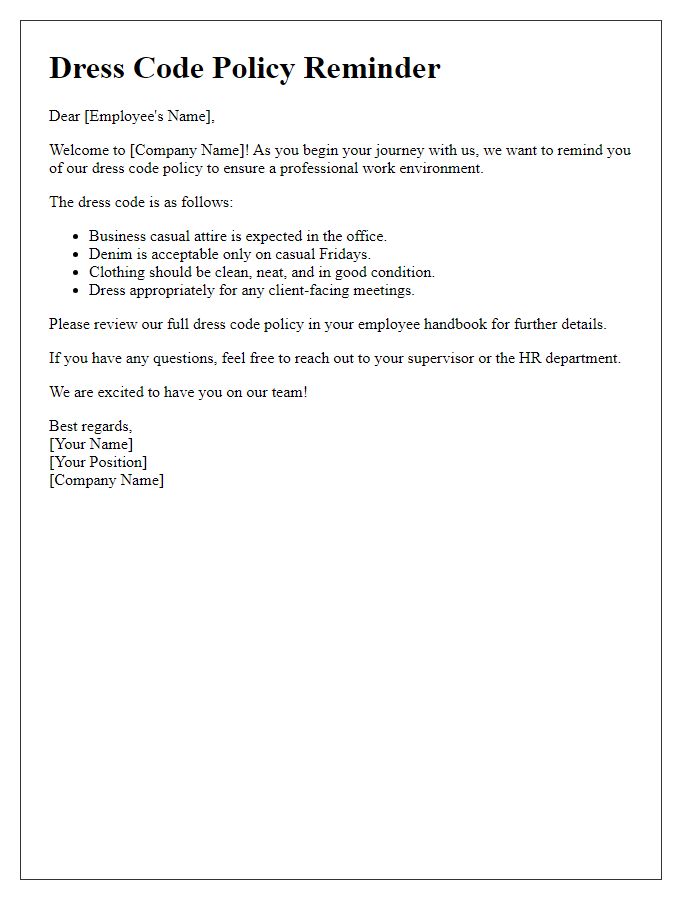
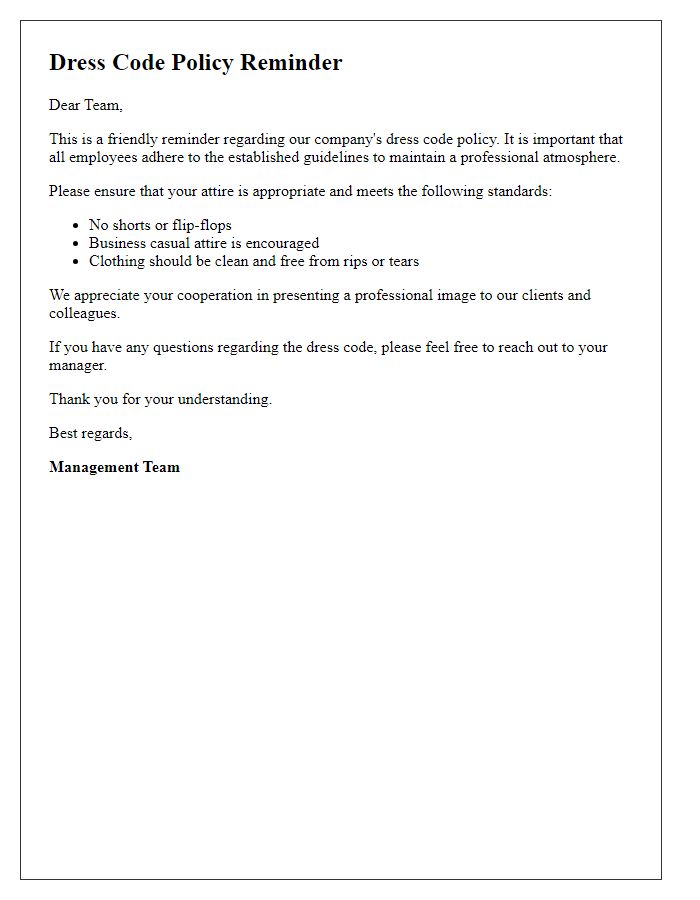
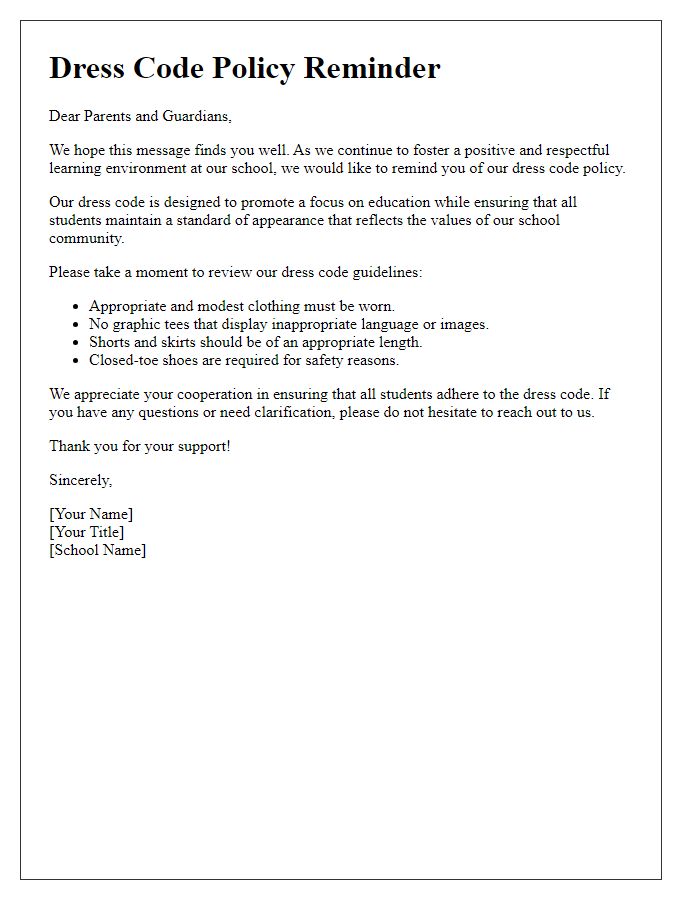
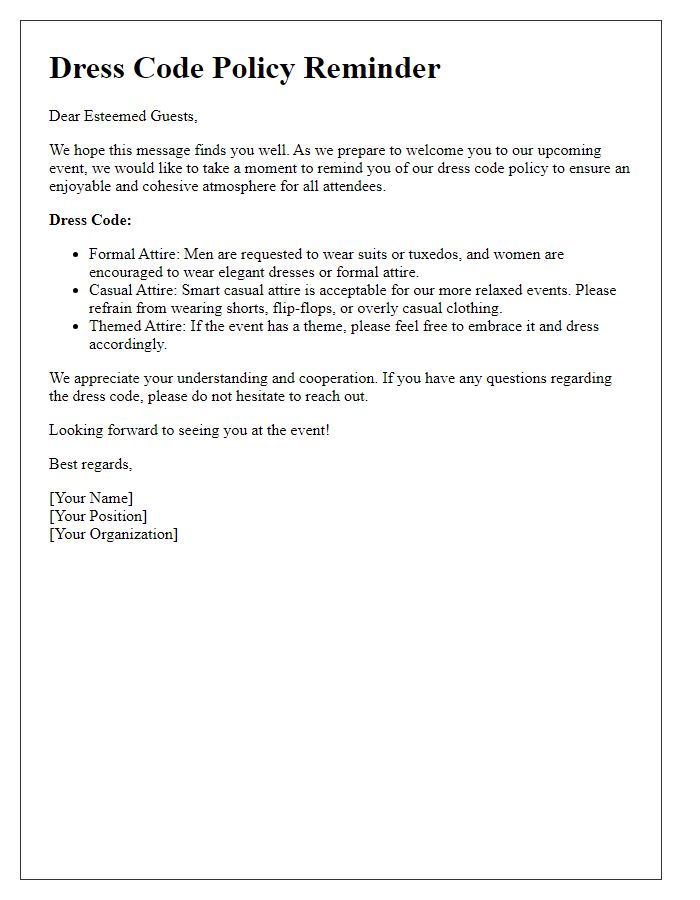
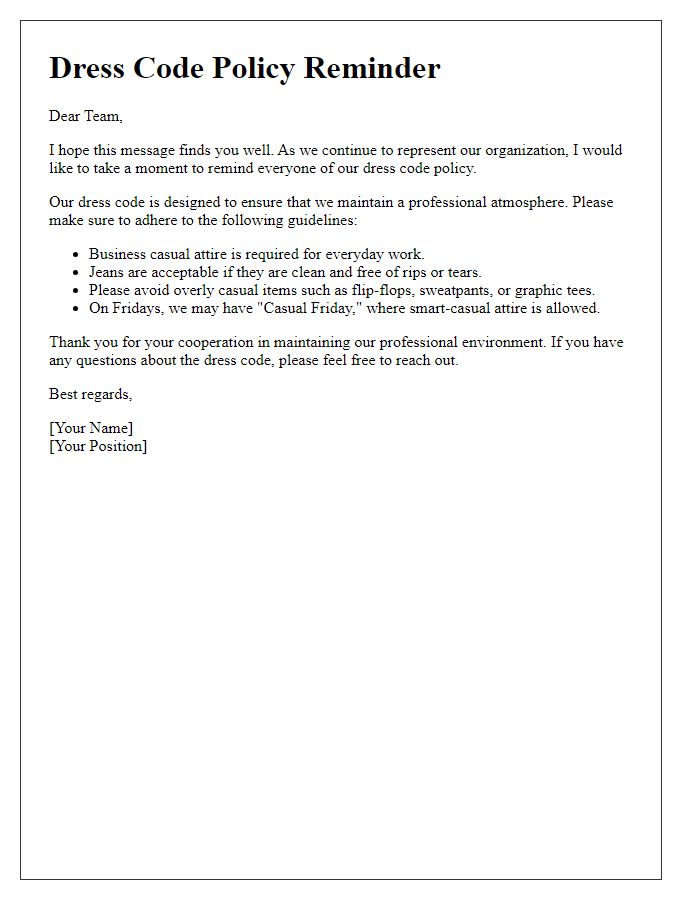


Comments